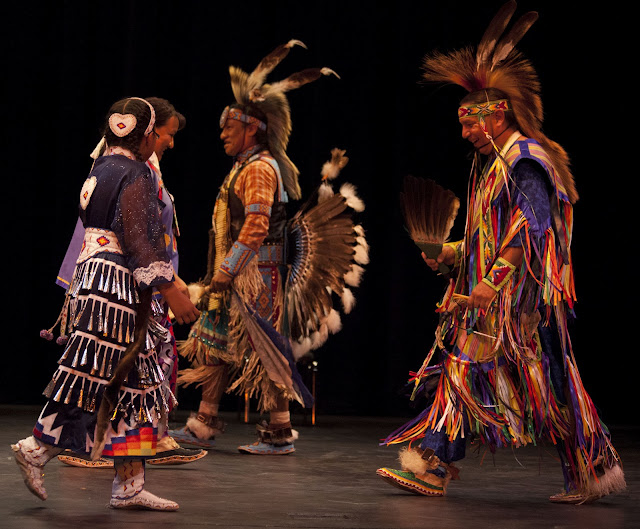Indian Summer --
wild plum leaves russet beneath
a cottonball sky
Indian Summer, the sunny, colorful hiatus between Summer green and Winter gray. Puffball altocumulus clouds punctuate an intensely blue sky, contrasting with the vivid fall foliage. Even the poison ivy looks gorgeous decked out in brilliant burgundy, copper and gold.
The secret of this magic leaf transformation is that the leaves don't actually "turn" red or orange or yellow, they just lose their green, like this shagbark hickory leaf, which is gradually going from green to yellow.
The secret of this magic leaf transformation is that the leaves don't actually "turn" red or orange or yellow, they just lose their green, like this shagbark hickory leaf, which is gradually going from green to yellow.
These oak leaves have red polish on their "finger nails."
Several pigment colors are in the leaves all along: green chlorophyll, red anthocyanin and yellow caratenoid. In summer the leaves are busy putting light together with water and carbon dioxide to produce oxygen and glucose. Photosynthesis takes place with the help of chlorophyll, and the predominance of this green pigment hides the red and yellow. This sumac leaf is experiencing chlorophyll withdrawal.
When the days get shorter, there's not enough light for photosynthesis, so plants stop taking up water and eating light and prepare to live through the winter on stored sugar. As the green chlorophyll fades from the leaves, the underlying pigments appear. When there's more anthocyanin, the leaves appears red, like these compound staghorn sumac leaves.
More caratenoid, and the leaf appears yellow, as seen in this compound shagbark hickory leaf.
A mixture of anthocyanin and caratenoid results in orange, as shown in this compound buckeye leaf.
Anthocyanins require light, so the sunnier the days, the brighter the red foliage. It's also interesting to notice that trees, like this maple, often turn red from the top down, since the leaves at the top receive more sunlight.
All this fanfare of brilliant color is the last hurrah of the leaves. Deciduous plants prepare for the little death of winter by shedding their leaves. They do this by shutting off the water supply so that the leaf stem dries up, gradually loses its grip and falls. In a light breeze the trees appear to be "raining" red, orange or yellow leaves.
When our heart stops ticking and the body loses its grip, wouldn't it be lovely if we went out in a shout of glorious colors?


















































